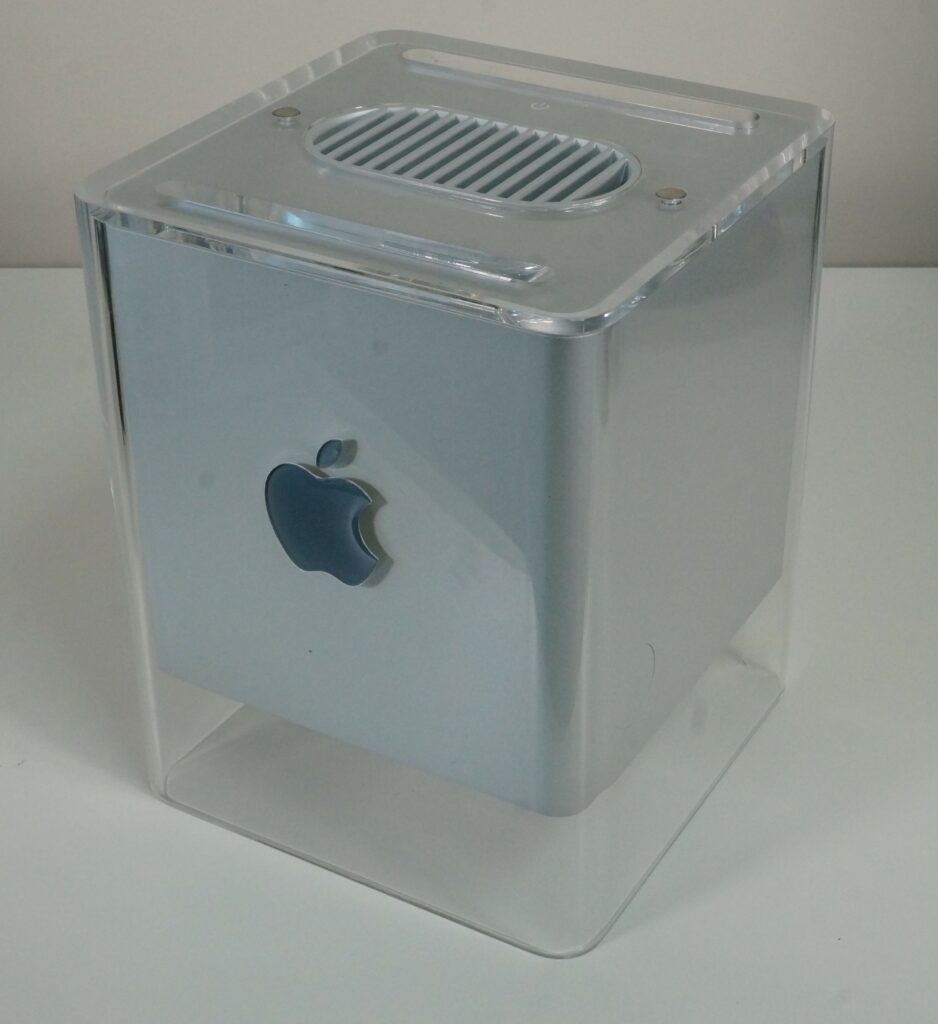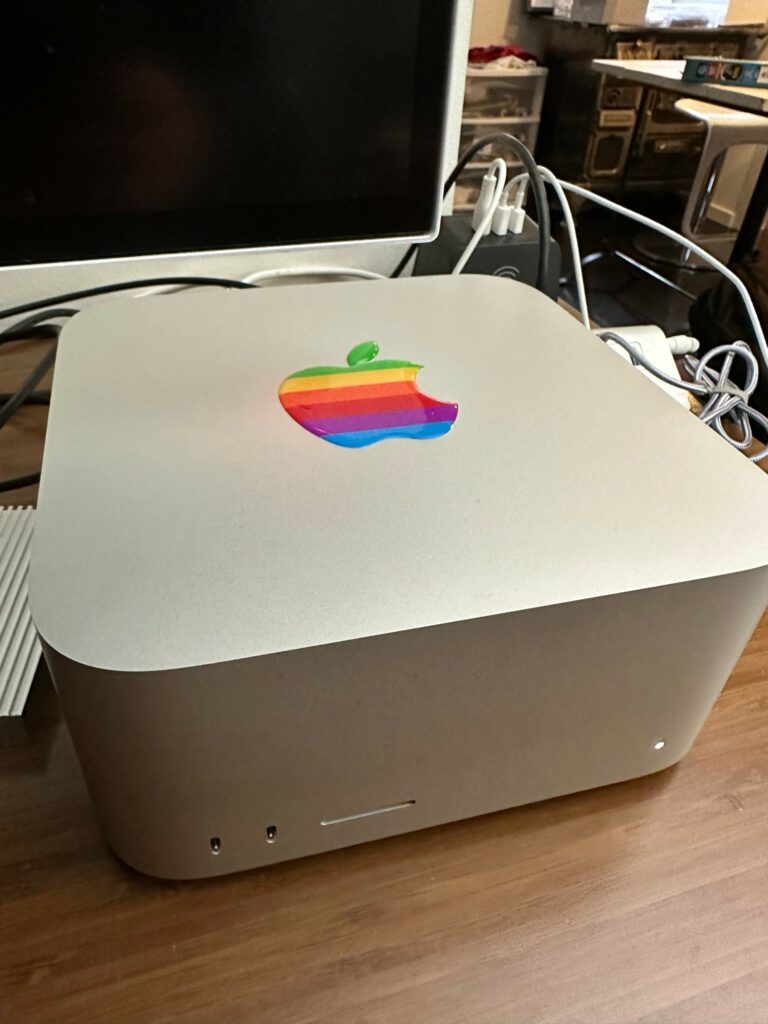This is a late-coming review of something I’ve been using for a couple of months. But first, let me set the stage.
A few years ago, I was frustrated with the direction Apple computers seemed to be taking. The iMac line stagnated, and it was expensive, anyway. As my old iMac became more and more annoying, mostly because I had cheapened out and bought the Fusion Drive (I know this advice is now worthless, but don’t buy the Fusion Drive, kids) it was subject to random pauses, and generally slow. The obvious answer was the Xeon-equipped iMac Pro, but it was unfathomably expensive, and there were rumors of Another Architecture Switch coming down the pipe Any Day Now, which would render the Intel-based Macs eventually obsolete.
Plus, at the time this was happening, the Xeon-based iMac Pro was already about two years old, and still selling for the same price as it was when new. Which, for those of us used to getting twice-the-horsepower-for-the-same-money-in-one-year-in-the-90s seemed absolutely ludicrous.
Even worse, Apple seemed determined to go down a path of iPhoneifying macOS. Making it harder to run unsigned apps; making it harder to modify the OS; leaning into the App Store and Services. The natural extrapolation of this curve was that some day you’d have to get all your apps from the App Store. No catching viruses, but no experimenting, playing, learning, either. No thanks.
So I did what many a self-respecting computer nerd Of A Certain Age does, and built myself a Ryzen-based, watercooled Linux workstation. It worked great, and I felt the smug superiority of yore once again.
I ended up using Windows and Linux on it. Both worked. Arguably, Linux on the desktop is fine these days. Fast forward about three years, add a move, and the good workstation got flaky. Random reboots, wouldn’t power on. BIOS upgrades didn’t fix it. Parts were no longer available, so ordering parts and swapping meant building a new computer in practice. The new motherboard wouldn’t work with my CPU, etc.
In the meantime, also, the Apple Silicon transition was well under way, and Apple had threaded the needle very, very well. The OS image is sealed and read-only on current macOS, much like Fedora Silverblue and other immutable systems, but the bootloader is unlocked. You can run Linux on AS Macs if you want. Development tools and the UNIX command line are there, and aren’t going anywhere. The hardware is better than ever. I was issued an Apple Silicon MBP at work, and it’s pretty much great; all the foibles of the butterfly keyboard, touchbar era were reverted and fixed with a vengeance.
So I needed a personal workstation, and Apple had not gone off the deep end. Even worse, I missed macOS. I missed the iMessage integration; I still suspect this is Apple’s secret weapon in the platform wars. Sure, WhatsApp, Signal, and Facebook Messenger, and I don’t know what else these days, all work, and they work well. But iMessage is seamless in a way nothing else is.
So back to Apple it was. The question was what to get; I like lots of RAM, as I tend to run VMs and memory-hungry graph (algorithm, not chart) software. Plus, with the current SoC design where the RAM is baked in, upgradeability is nil; so over-provisioning is better, provided your budget can handle it.
The problem for me was that, at that point in time, the Mac Studio -the obvious choice- was over a year old and, as Apple does, still priced the same as when it launched. It was pretty obvious that an upgrade was coming soon, but my workstation was getting flakier and unreliable and I didn’t want to deal with it any more.
Plus, you know, I had lusted after a Power Mac G4 Cube ever since I saw the first one in the flesh. I mean: look at this. It was gorgeous then, and it still is.

The Mac Studio is the spiritual successor; and an almost-brutalist one, at that, where form follows function slavishly. But it’s beautiful, too, in its own minimalistic way.

So I ended up buying a year-old computer, at full price despite previous misgivings. Also, uncharacteristically for me, I bought a middle-of-the-road model. M1 Max, not Ultra; 64 GB of RAM, not more (which, admittedly, would have required the Ultra). And now that the M2 became available… I don’t care.
It’s the best Apple desktop I’ve ever used. I’ve owned or used a large number. Sure, it has some shortcomings, and the non-expandability is a sore spot. But it’s rock-solid, and it performs beautifully. Things happen instantly when you click on them. My photography workflows (on DxO Photolab, because Adobe is a terrible rent-seeking parasite) are fast and seamless. It’s dead silent; sure, you can hear a fan gently turning if you put your ear to it, and there’s airflow from the back if you put your hand there. But in practice, there’s no noise. It Just Works™.
Benchmarks abound elsewhere, so I won’t bother. It’s definitely not as fast as the Ultra, and not as fast as the M2 models. You can get faster PCs, and for less money. Arguably, my Ryzen -at full tilt, with all cores occupied- was faster. But that isn’t the whole story. To the user, the sum total of the experience is faster here. The flakiness is gone; the M1 Max Studio is more reliable than some household appliances I’ve owned. And sure, I could get more CPU performance elsewhere. But this one is, finally, plenty for now. And I’d have to use Windows, or Linux as a daily driver. I’d lose access to the Apple ecosystem. I’d lose the wonderful hardware-software integration that makes computing less clunky, and more pleasant.
Overall, I’m thrilled with the change. I can see myself using the same machine for years, even as it becomes obsolete. And I would, if you don’t game (or have a separate gaming system) wholeheartedly recommend it.